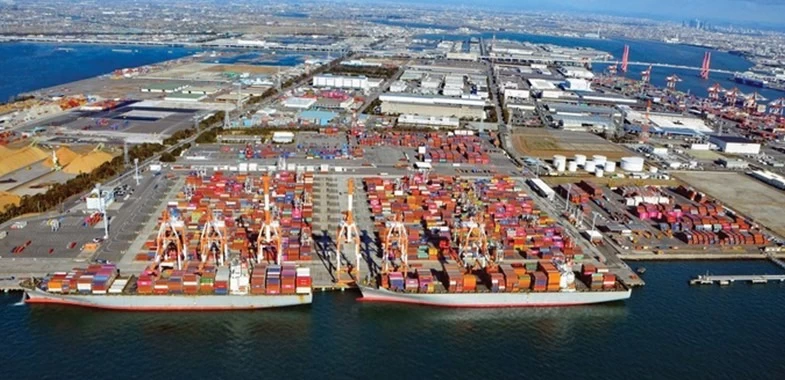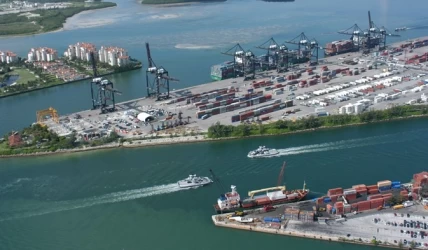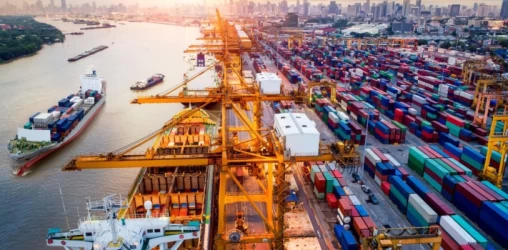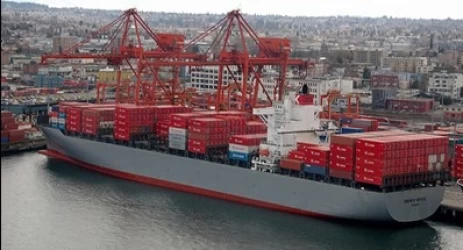Sea Freight in the Port of Nagoya
The Port of Nagoya, located in Aichi Prefecture, Japan, is one of the most significant and busiest ports in the country. It plays a crucial role in Japan’s economy, serving as a major hub for sea freight and international trade. This article delves into the various aspects of sea freight operations at the Port of Nagoya, highlighting its infrastructure, cargo handling capabilities, and its importance in global trade.
Historical Background
The Port of Nagoya has a rich history dating back to the early 20th century. It was officially opened in 1907 and has since undergone numerous expansions and modernizations to accommodate the growing demands of maritime trade. Over the years, it has evolved into a state-of-the-art facility, equipped with advanced technology and infrastructure to handle a wide range of cargo types.
Infrastructure and Facilities
The Port of Nagoya boasts an extensive and well-developed infrastructure that supports its sea freight operations. Key facilities include:
- Container Terminals: The port has several container terminals equipped with modern cranes and handling equipment. These terminals are designed to efficiently manage the loading and unloading of containerized cargo, ensuring quick turnaround times for vessels.
- Bulk Cargo Terminals: Specialized terminals handle bulk cargo such as coal, iron ore, and grain. These terminals are equipped with conveyor systems and storage facilities to manage large volumes of bulk goods.
- Ro-Ro Terminals: The port has dedicated roll-on/roll-off (Ro-Ro) terminals for handling vehicles and heavy machinery. These terminals facilitate the seamless transfer of wheeled cargo between ships and the port.
- Warehousing and Storage: The port offers extensive warehousing and storage facilities, including refrigerated storage for perishable goods. These facilities ensure that cargo is stored safely and efficiently before being transported to its final destination.
Cargo Handling Capabilities
The Port of Nagoya is renowned for its impressive cargo handling capabilities. In 2022, it was the leading port in Japan based on sea freight volume throughput, handling approximately 163 million metric tons of cargo. The port’s ability to manage such a high volume of cargo is attributed to its advanced logistics systems and efficient operational processes.
- Containerized Cargo: The port handles a significant volume of containerized cargo, including consumer goods, electronics, and automotive parts. The container terminals are equipped with automated systems that streamline the handling process, reducing the time vessels spend in port.
- Bulk Cargo: The port’s bulk cargo terminals are designed to handle large quantities of raw materials such as coal, iron ore, and grain. These terminals are equipped with high-capacity conveyor systems and storage facilities, ensuring efficient handling and storage of bulk goods.
- Automotive Cargo: Nagoya is a major hub for automotive exports, with dedicated Ro-Ro terminals for handling vehicles. The port’s proximity to major automotive manufacturing plants in the region makes it a key gateway for exporting vehicles to international markets.
Economic Impact
The Port of Nagoya plays a vital role in Japan’s economy, contributing significantly to the country’s trade and commerce. It serves as a critical gateway for imports and exports, facilitating the movement of goods between Japan and the rest of the world. The port’s strategic location and advanced infrastructure make it an attractive destination for international shipping lines and logistics companies.
- Job Creation: The port’s operations generate employment opportunities for thousands of people in the region. From dockworkers and logistics personnel to administrative staff and engineers, the port supports a diverse workforce.
- Trade Facilitation: The port’s efficient cargo handling capabilities and connectivity to major global trade routes make it a key facilitator of international trade. It enables Japanese businesses to export their products to global markets and import raw materials and goods from overseas.
- Economic Growth: The port’s activities contribute to the economic growth of the region by attracting investment and fostering industrial development. The presence of the port has led to the establishment of numerous businesses and industries in the surrounding areas, further boosting the local economy.
Environmental Initiatives
The Port of Nagoya is committed to sustainable and environmentally friendly practices. The port has implemented several initiatives to reduce its environmental impact and promote green shipping.
- Emission Reduction: The port has introduced measures to reduce greenhouse gas emissions from ships and port operations. This includes the use of cleaner fuels, energy-efficient equipment, and shore power facilities that allow ships to turn off their engines while docked.
- Waste Management: The port has established comprehensive waste management systems to handle and dispose of waste generated by ships and port activities. This includes recycling programs and proper disposal of hazardous materials.
- Marine Conservation: The port is involved in marine conservation efforts to protect the local marine ecosystem. This includes monitoring water quality, preventing pollution, and supporting initiatives to preserve marine biodiversity.
Sea Freight Between the Port of Nagoya and Iran
Sea freight between the Port of Nagoya and Iran plays a crucial role in facilitating trade and economic relations between Japan and Iran. The Port of Nagoya, with its advanced infrastructure and efficient cargo handling capabilities, serves as a key gateway for exporting Japanese goods such as automotive parts, electronics, and machinery to Iran. Conversely, Iran exports various commodities, including petrochemicals and agricultural products, to Japan through this maritime route. The seamless operation of sea freight between these two regions not only supports bilateral trade but also strengthens the economic ties and cooperation between Japan and Iran.
Conclusion
The Port of Nagoya stands as a testament to Japan’s maritime prowess and its commitment to efficient and sustainable sea freight operations. With its advanced infrastructure, impressive cargo handling capabilities, and strategic importance in global trade, the port continues to play a pivotal role in Japan’s economy. As the port looks to the future, it remains dedicated to innovation, sustainability, and maintaining its position as a leading hub for sea freight in the Asia-Pacific region.
if you have a specific question or need more details about Nagoya Port, Iran's logistics experts are your answer!











